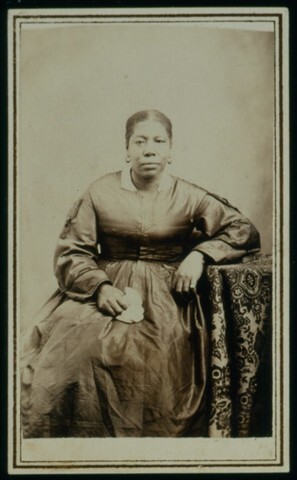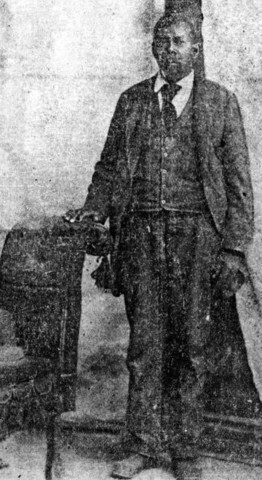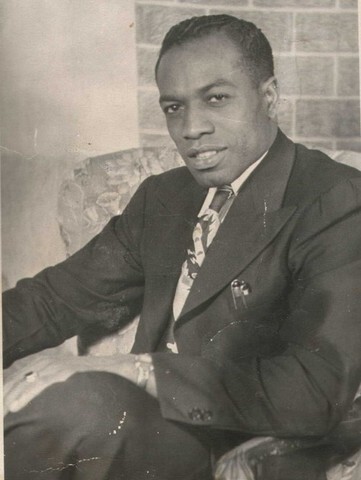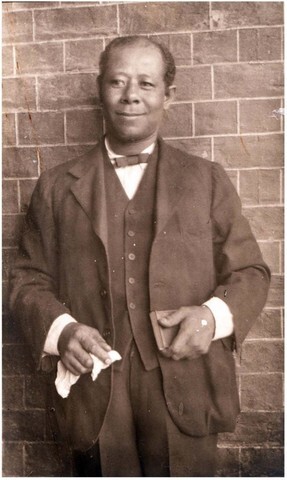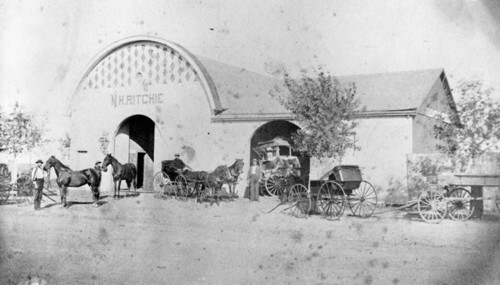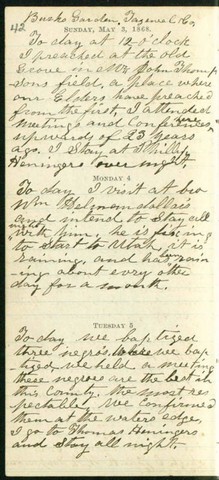Ardis E. Parshall became tearful as she walked across the cemetery lawn to see the new monument honoring William and Marie Graves. Although she knew their story, it was like she was meeting them in person for the first time.
The historian, genealogist, and blogger discovered the Graves' story more than five years ago while sifting through seldom-used files in the Church History Library. The paper trail started with a 1920 handwritten letter Marie wrote to President Heber J. Grant describing a "hurtful" visit she and friends had to a Latter-day Saint chapel in Atlanta.
Digging deeper, Parshall learned the Graves were stalwart converts of The Church of Jesus Christ of Latter-day Saints in Oakland, California. After the Graves' story was shared online, local church members found out William never had a headstone and raised funds for a new monument that identified the couple as pioneering African American Saints in Oakland.
Back at the cemetery, Parshall observed several people — black and white — stood in front of the monument to pay their respects, and realized they had "embraced William and Marie as 'their' pioneers," she wrote in an email to the Deseret News.
"They aren't going to forget this couple," Parshall wrote.
Not only will the memories of William and Marie Graves live on in Oakland, but their names and stories will soon be added to Century of Black Mormons, a digital history database designed to identify and document the lives of black Latter-day Saints from 1830-1930.
The database was started last year by W. Paul Reeve, the Simmons Professor of Mormon Studies in the history department of the University of Utah. Since then, a small team of volunteer researchers have compiled 66 complete records of early black Latter-day Saints, including original photos and documents. Reeve expects the database will compile more than 300 in the coming years, he said.
It's probably the most rewarding academic project he's ever been involved with, Reeve said.
"It's exciting for me to go into the archive hoping to find information about someone who's been lost to history," the Reeve said. "More often than not Latter-day Saint history is told from the perspective of the leaders. This is a project that tries to understand Latter-day Saint history from the perspective of the pews and from the most marginalized in the pews. Recovering their names, their identities, it's just enormously rewarding."
Origins
One of Reeve's motivating factors for creating the database was an often-encountered question in his research.
"There's always been a question about how many black Latter-day Saints there were," Reeve said. "And the official response from the church has always been we don't track membership according to racial categories. So no one actually had an answer."
In the last decade, Reeve noticed how some media outlets poked fun but also reinforced the public perception that there are few, if any, African Americans in the church. On a 2012 episodeof "Jimmy Kimmel Live," Kimmel asked, "Are there black Mormons? I find that hard to believe." Jessica Williams, a reporter with Jon Stewart's "The Daily Show," interviewed five African American church members and asked if they compromised the church's entire population of black Latter-day Saints?
"There's this public perception that Mormonism is white and has always been white," Reeve said.
The idea continued to develop as Reeve was speaking to a group in Texas in February 2016. During a question-and-answer exchange, an African American Latter-day Saint woman raised her hand and said, "Do you know who much we give up to join this faith?"
It was Black History Month. The woman said the Protestant faith she left was celebrating with placards and sermons, but it was not even mentioned in her Latter-day Saint ward. Then in July, we endure all these talks on pioneers, but no one asks an African American because they assume we don't have any pioneer stories, Reeve said.
There wasn't even a place for her to go to learn more about black Latter-day Saint pioneers, which gave Reeve an idea.
Later that year, the professor pitched the idea of Century of Black Mormons and was accepted into a summer fellowship at George Mason University, where he received training in digital history. This gave him enough confidence to come back to the University of Utah and partner with the J. Willard Marriott Library on the project. The database launched in June 2018, Reeve said.
"No one has even attempted to identify, number and name black Latter-day Saints," Reeve said. "The database demonstrates that they have been part of the Latter-day Saint movement from the beginning in 1830."
Needles in a Haystack
At any given time, six to 12 people are working on different aspects of the database, including graduate students, volunteers from the community and some descendants of black Latter-day Saints, Reeve said.
The Church History Department allows the database to take digital images of membership records and make them public. The church's Family History Department has also shared resources, Reeve said.
"Making those resources available to us has been crucial to the success of the database," Reeve said.
The biggest challenge facing the team is the "time-consuming, tedious and laborious research," although sometimes they occasionally find a church membership record where a clerk or missionary noted, "Colored" on it, Reeve said.
"It's needle-in-the-haystack kind of research," Reeve said. "You're frequently trying to find information about people who left few written records behind."
One of those needles is the story of William and Marie Graves.
Parshall, a historian and researcher-for-hire, is always on the lookout for good Latter-day Saint stories for her blog, Keepapitchinin.org. As an associate of Reeve, it was natural for her to become involved with the database project.
Six years ago, she was skimming through a "rather dull" file of missionary tract distribution reports and requests for permissions to build chapels when she found Graves' letter to President Grant. Parshall had never heard of Graves, but she was heartbroken to read how this woman and two friends were made to leave a Latter-day Saint chapel in Atlanta "because we was Color(e)d." Graves had wanted President Grant to know, "I never had nothing to hurt me like that in all of my life."
Unlike Georgia, Saints in Oakland accepted the Graves and they remained faithful until their deaths.
Parshall continued to research the Graves with the help of Vicki Standing, an experienced African American genealogist, and wrote several blogs, sparking the interest of Saints in Oakland.
More than any other project she's worked on, the database has pushed Parshall to use all her gifts to make sure these people are honored, remembered and loved, she wrote.
"I have worked on many significant projects in my historical career, important both to Mormon history and to my personal faith. I have never worked on a project that means as much to me as Century of Black Mormons does," Parshall wrote in an email. "These are people whose stories I connect to very deeply — they responded to the same gospel principles I respond to, and they did it under conditions that I have never had to face, with opposition from outside to their Mormonness, and perhaps worse, opposition from within the faith to their blackness. Yet they persevered, with grace and strength."
Reeve, a Latter-day Saint, later wrote a guest post for Parshall's blog recounting how he and his wife performed the sealing ordinance on behalf of William and Marie Graves.
"Marie died in 1930 and William in 1940," Reeve wrote. "In 2016, we remembered them. We said their names and we told their story inside the sealing room inside the temple."
Freda Lucretia Magee Beaulieu

Freda Magee Beaulieu was baptized in 1909 and received her temple blessings in the Washington D.C. Temple on July 21, 1978, one month and 13 days after The Church of Jesus Christ of Latter-day Saints opened the priesthood and temple blessings to people of all racial backgrounds. She described that day as the "happiest day" of her life. Provided by Gloria Evans Mixon.
Reeve uncovered another remarkable "needle" in Freda Lucretia Magee Beaulieu, of Tylertown, Mississippi.
Baptized in a creek with her family in 1909, this Latter-day Saint woman traveled 1,000 miles a month after the 1978 revelation to receive her blessings in the Washington D.C. Temple. She wrote that it was "the happiest day" of her life, Reeve said.
In 1982, Beaulieu spoke at a New Orleans stake conference and the branch president sent her talk to the Church History Department.
"Imagine my surprise when I'm doing research on her and find a talk she gave in 1978, which tells the story of her family's conversion in 1908 and 1909?" Reeve said. "This is just one example of the sort of stories people have never heard before that are in the database."
Reeve connected with Beaulieu's niece, Gloria Mixon, who was thrilled to learn things about her family she didn't know before. He sent her aunt's talk and in turn, Mixon sent him some family photos.
Mixon, who lives in Stockton, California, was baptized at age 8 but stopped practicing the faith during the Civil Rights era, although she does have family members who are active today. She admires her Aunt Freda's faith and Latter-day Saint convictions and is grateful to know her story is preserved in the database.
"No matter what else was going on in the world, she remained steadfast in her beliefs," Mixon wrote in an email. "She was a wonderful lady and a fabulous cook."
Nelson Holder Richie
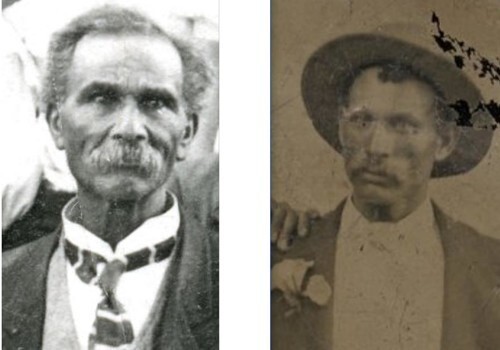
Nelson Holder Ritchie, left at age 68. Right, Ritchie at age 26. Provided by Deena Porcaro Hill.
The family lore was that Deena Hill descended from Cherokee Indian blood.
Three years ago, the American Fork resident and white Latter-day Saint saw an Ancestry.com DNA test advertisement on television and decided, "By darn, I'm going to find out if I have Cherokee blood," Hill said.
Hill learned the DNA test could detect Native American roots, but not the tribe. She was encouraged to find the closest person to the source and test their DNA. So she found an Arizona man who might be a grandson and asked if he would test his DNA? He agreed, and came back with unexpected results.
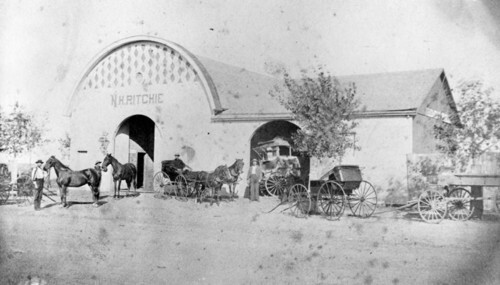
Nelson Holder Ritchie's livery stable in Great Bend, Kansas. Ritchie was baptized into The Church of Jesus Christ of Latter-day Saints in 1892. Provided by Deena Porcaro Hill.
"It came back showing African American blood," Hill said. "What's going on here?"
The African American DNA results were confirmed with tests by her 94-year-old grandmother and her 93-year-old sister.
The news motivated Hill to dig deeper into her family history, where she found Nelson Holder Richie, most likely the son of a slave owner named Wiley Holder and an unidentified black enslaved woman. In 1891, Nelson met Latter-day Saint missionaries in Kansas and joined the church, eventually moving to Utah.
Hill heard about Reeve's project through a relative and shared his story, she said.
Thanks to interest in Richie's story, Ancestry DNA tests have brought together a large number of white and black descendants from Utah to North Carolina, said Hill, who attended a family reunion in North Carolina last year to meet her new cousins.
This is another example of not giving up when you hit brick walls in your family history research, Hill said.
"I feel like my ancestor Nelson Holder Richie has been vindicated," Hill said. "I feel like he had to live in the shadows of life because he was a runaway slave. He never even told his children his background because he was on the run for so long. I think he kept that quiet. I feel like now his story is finally told. He can finally say, 'this is my life.' I’m very, very excited about it. It's so important to find out where you come from and who you are. It's priceless."
Paul Thomas Harris

Paul Thomas Harris converted to The Church of Jesus Christ of Latter-day Saints in 1910. Creator: June B. Sharp.
Matthew McBride, a historian for the Church History Department and one of Reeve's students, was introduced to the database as part of a course he took on Latter-day Saint history. He researched the life of a Latter-day Saint in Johannesburg, South Africa, named Paul Thomas Harris.
Harris joined the church in 1910 but was not welcomed to meet with white members in the local branch. He met instead with missionaries in his home where they partook of the sacrament and shared testimonies. Although an outsider in his own faith, he found ways to support the growth of the church, paid tithing and fed the missionaries, McBride said.
McBride found information about Harris in missionary diaries and church membership records, then one afternoon discovered his passport application, which provided valuable details about his life and family, as along with a rare photo. Harris had planned to move the United States but didn’t make the trip, McBride said.
One of the highlights of participating in a project is how people you've never met become like dear friends, McBride said.
"We are not related, but I feel the same excitement about this as I do as I work on my own genealogy," McBride wrote in an email. "A real sense of connection."
More Features
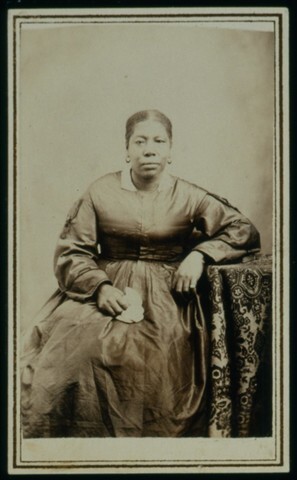
Some of the more well-documented early black Latter-day Saints, including Elijah Able and Jane Elizabeth Manning James, and their families, are part of the website. Database researchers confirmed that Able, his son Moroni Able and grandson Elijah Able III all received the Melchizedek Priesthood, Reeve said.
The new website features a timeline (click on When) of baptismal dates for black Latter-day Saints, starting with "Black Pete" in Kirtland, Ohio, in 1830, the same year the church was founded in Fayette, New York.
Website visitors can view a map (click on Where) of Angel Moroni icons pinpointing where each black Latter-day Saint was baptized. A trio of icons in the Atlantic Ocean tell the story of three black sailors who joined the church while aboard the ship International, which carried 477 Latter-day Saint immigrants to New Orleans in 1853.
Another page titled How Many displays graphs and other data gathered from research, including demographics, how many men received the priesthood or temple ordinances before 1978 and how many people were baptized in Utah compared to the rest of the United States and internationally, among others.
Timing
While scholars and other audiences are interested in Reeve's project, the CBM database is emerging at an interesting time for African American Latter-day Saints.
Last April, church members sustained Elder Peter Johnson, of Birmingham, Alabama, as the first African American general authority in church history.
At RootsTech in February, Elder David A. Bednar of the Quorum of Twelve Apostles presented a $2 million donation for the International African American Museum Center in South Carolina.
One year ago, President Russell M. Nelson and the church hosted a "Be One" celebration to commemorate the 40th anniversary of the revelation on the priesthood.

In the last year, new films featuring early African American Latter-day Saints Jane Manning James and Green Flake have made headlines.
Over Memorial Day weekend, one of the first African American pioneers to reach the Salt Lake Valley, Hark Lay Wales, was honored with a new headstone.
Speaking as a member of the church and not a professor, Reeve said creating this database was the right thing to do.
"The body of Christ is not complete unless all its members are included," he said. "That's part of the motivation here."
"People should remember the lives of these men and women the same way they do the handcart pioneers or the Saints who were driven from Missouri to build a new home in Nauvoo," McBride said. "It was so meaningful to see a few of them talked about during the 'Be One' celebration last year. Century of Black Mormons tells hundreds more."
For more information about the Century of Black Mormons or to see the bios, photos, and other documents, visit exhibits.lib.utah.edu/s/century-of-black-mormons/page/welcome.
